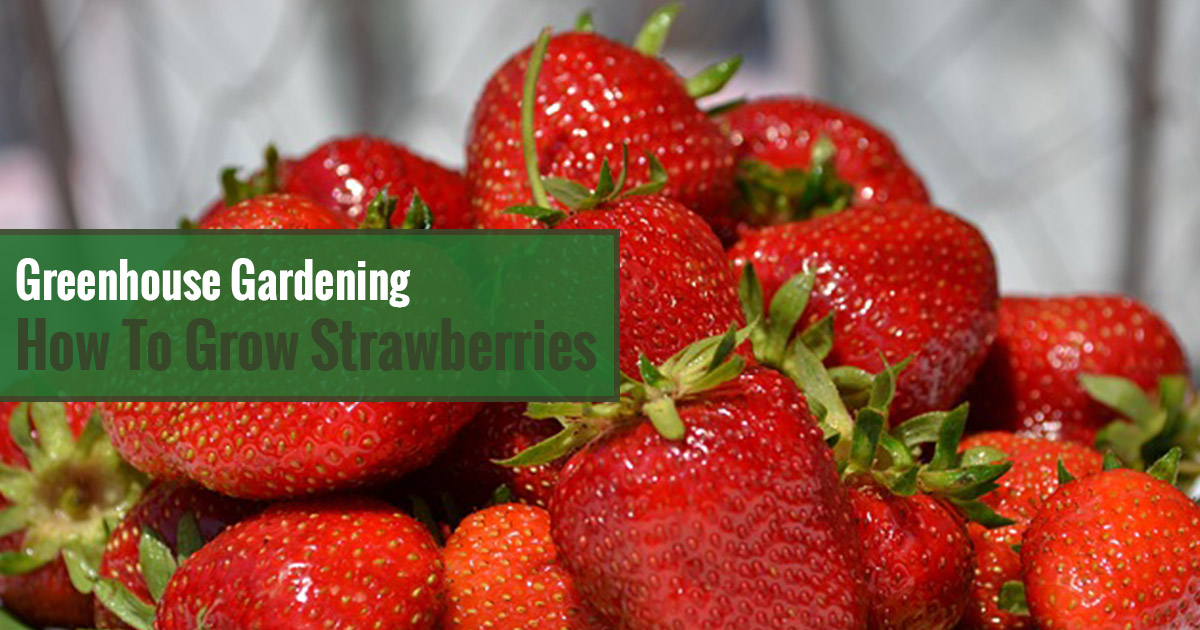The first I time have handpicked my own greenhouse-grown strawberries was in the Highlands of Malaysia. It was a lot of fun and it intrigued me to grow my own strawberries in my greenhouse.
Being one of the most popular fruits around the world, there is always demand for them. The growing season, however, is quite short. That’s why growing strawberries in a greenhouse is a good idea. You can have a fresh home-grown supply of these nutritious berries all year round!
Now, there are a few things you need to know before you can bite into your juicy greenhouse strawberries. In this article, we are walking you through some growing requirements to get thriving strawberry plants off-season.
Can you grow strawberries in a greenhouse year-round?
The simple answer is yes but it takes a bit of planning and equipment.
In the US, almost all of the strawberries are raised in the Southern and coastal environments of California (around 90%). Florida is the second biggest producer. You can read about it here.
If you don’t live in a location where strawberries can be grown almost year-round, you can grow them in your greenhouse instead. This way you can extend your regional growing period.
However, keep in mind that strawberry plants still need dormancy. So, you should include this into your greenhouse schedule!

Although a greenhouse can protect your strawberry plants from pests and diseases to some extent, they can still get infested. There have been efforts to create strawberry plants with resistances. Scientists have discovered and are still experimenting with genes that can protect strawberries against diseases like Verticillium and Fusarium wilt and Macrophomina. It will also enhance the taste or aroma and prolong its shelf life.
Types of strawberries
Depending on your needs and goals, you should know that there are different types of plants to choose from. Even if you grow strawberries in a greenhouse, it will not change the bearing times of the plants much.
Therefore, picking the right type of plant is crucial for your year-round strawberry supply. If you just want to extend the picking season, you still may use seasonal plant types.
June-bearing strawberries
June bearers are amazingly common and affordable. They provide the highest strawberry yields and you can normally achieve it over a span of two to three weeks. They are divided into Early Season, Midseason, and Late Season:
- Early Season strawberries normally start fruiting in the late spring.
- Early Midseason strawberries start fruiting around five days after Early Season varieties.
- Midseason strawberries start bearing fruits nearly eight days after Early Season varieties.
- Late Midseason strawberries will start fruiting in about ten days after Early Season varieties.
- Late Season strawberries will produce their berries approximately 14 days after the Early Season varieties.
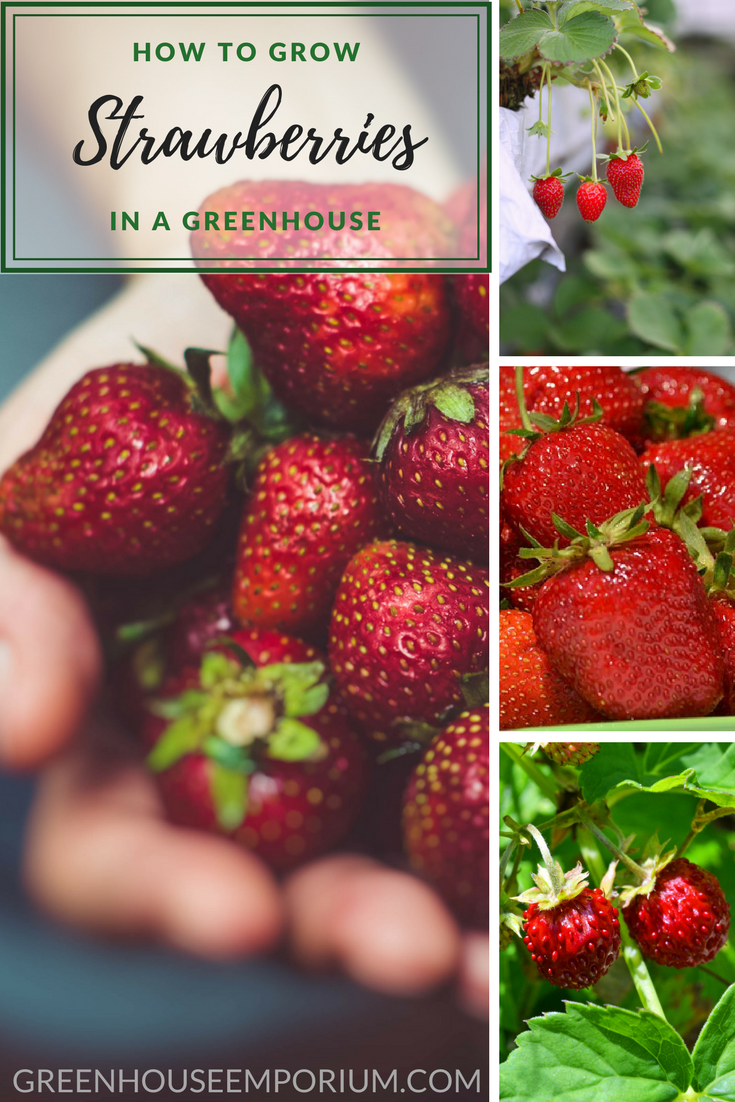
Everbearing strawberries
Everbearing strawberries do not bear fruits endlessly. They usually allow two harvests every year. It is also likely for some of them to produce three harvests under excellent conditions.
They put out fewer runners than the June bearing varieties. They are set using the hill system or in areas where space is short.
Day-neutral strawberries
Day-neutral strawberries are unique. They will produce a healthy harvest in the first year. They flower and fruit as long as the temperature is between 35°F to 85°F.
Outside they can bear fruits from April until October. A greenhouse, however, can provide the perfect conditions for them to give you a year-round supply.
The disadvantage of this variety is that they produce smaller berries than June-bearing and everbearing strawberries. These berries are also planted using the hill system just like the everbearing ones.
Best strawberries for greenhouse
Most strawberries will do well in greenhouses. According to studies from the University of Florida, there are two varieties that performed very well in commercial high tunnels: ‘Florida Radiance’ (short day cultivar) and ‘Florida Beauty’ (day-neutral cultivar).
If you want a year-round supply, you may want to opt for the day-neutral strawberries. If you also want larger fruits, maybe add a few June-bearing varieties.
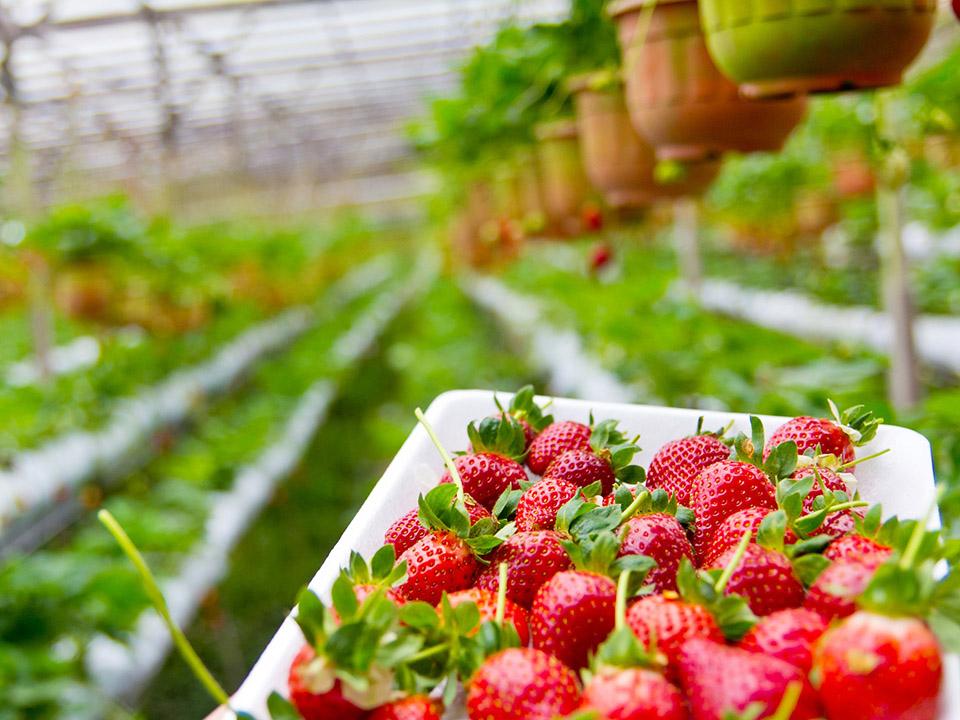
Quick overview of growing strawberries in a greenhouse
- Type: Warm-season crop
- Time from seed to harvest: 60-90 days
- Germination temp: 65-70°F
- Time until first emergence: 2-3 weeks
- Best temp to grow: 60-80°F
- Height: 12-16 in
- Spread: 12-18 in (runners will increase this)
- Grow from seed: cool/freeze seeds before germination, 1/4-1/2 in deep, 1 in apart; rows (or separate pots) 12-18 in apart ; thin to 8-12 in spacings
- Companions: Plenty – Asparagus, beans, peas, rhubarb, spinach, lettuce, garlic, lupins, & more
- Keep away from: brassicas, nightshades, okra, roses, melons
How to grow strawberries in a greenhouse
Sun-ripened strawberries are easy to grow in greenhouses if you follow some simple steps.
If you start off with immature plants or runners, plant them in a clear cup, pot, or humid propagator first. Wait until the roots have matured and then transplant into pots or into the ground.
How to plant greenhouse strawberries in the ground or raised beds
Work the soil in raised beds as this offers the best condition for greenhouse-grown strawberries. Apply a water-soluble organic compost that has high potash amount to promote fruiting.
Provide your strawberries with plenty of space. Plant them 18 inches apart, leaving 30 inches between rows.
Use a trowel to bore a hole large enough to accommodate the roots. Ensure the hole is deep enough to accommodate the whole root system without bending them and make sure the crown remains just above the surface. Don’t plant your strawberries too deep because they might rot.
Then mulch the beds to regulate water loss and minimize the invasion of weeds.

How to plant greenhouse strawberries in pots
The pots for your greenhouse-grown strawberries should be at least six inches in diameter and around 12-15 inches deep with several draining holes. Terra-cotta or plastic pots with cup-shaped holes throughout the sides are good.
Hanging baskets make a great option in greenhouses! A 12in wide hanging baskets can keep three to four strawberry plants. Use Plant Caddie Hooks for your hanging baskets – They make it easier to raise and lower the basket for plant care and harvest!
Florian variety is the best choice for hanging baskets because it bears fruit both on the mother plant and its runners.
Growing strawberries from runners (easy propagation)
Strawberry runners are also called stolons. Runners are the long, vine-like offshoots that strawberry plants send out, which can create new “baby” plants. This is a great way to increase your greenhouse strawberry plants over the years!
While that sounds nice, too many runners can actually drain energy from the main plant, reducing your strawberry yield. So, it’s a good idea to remove most runners, especially during the fruiting season.
Simply snip them off close to the base of the main plant. If you want to expand your strawberry patch, you can let some runners take root in pots and voila, new plants! Make sure that the crown is resting at the soil level (not below). The plants will bear fruits the following year.
Tips & tricks to grow strawberries in a greenhouse successfully
- Get disease-free seedlings from reputable nurseries
- When the flowers bloom, fill them with an organic liquid fertilizer every fortnight.
- Other variations of strawberry produce runners or stem with blooming plants along the length. Eliminate them when they appear so that the plant’s vitality will go towards fruiting and flowering.
- If you planted June-bearing varieties, remove the flowers in its first year so that you can have a rich harvest in June.
- The VegiBee Garden Rechargeable Pollinator will be helpful to encourage fruiting. Some berries can become deformed due to non-pollination.
- Straws and fiber mats keep down weeds and prevent root rot.
- Crop rotation is still the best practice. Replace your strawberry plants after three years.
- The plant will create a green color on the underside of the fruit is there is too much nitrogen in the soil. Fertilize less.
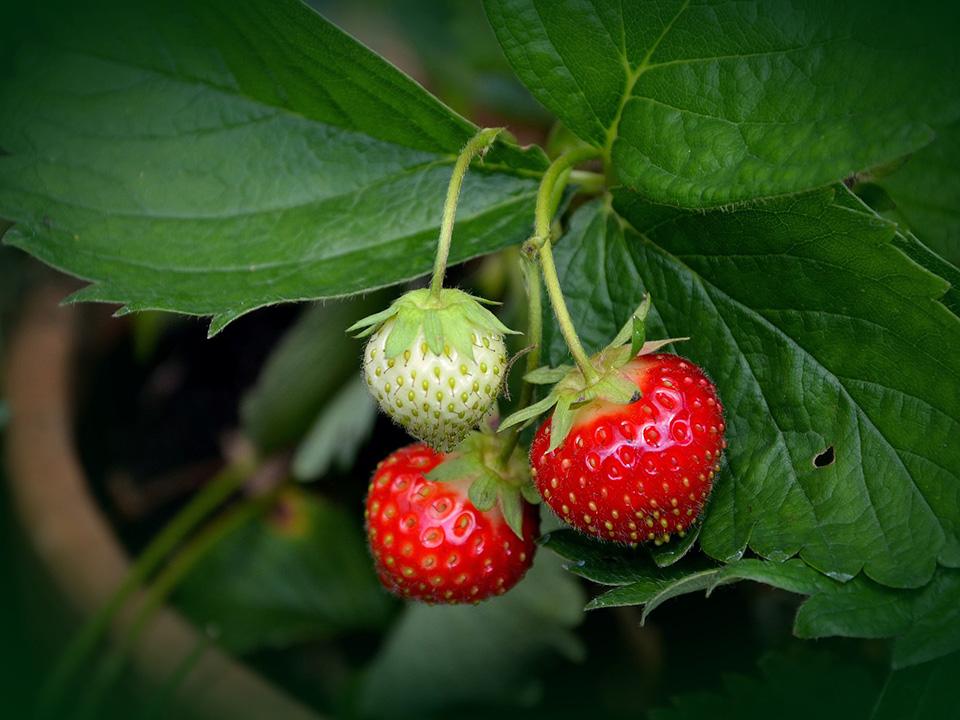
How to get a year-round supply of strawberries
As mentioned earlier in this post, you can achieve a year-round yield of strawberries by picking the right plant type. Proving the right conditions for your strawberry plants forces them into bearing fruits for longer periods.
There are simple ways of forcing strawberries so that they can flower and fruit earlier, later, or multiple times a year:
- Choose different types of strawberry plants to have a year-round harvest. For example, get 10 everbearing, 5 June-bearing, and 10 day-neutral plants. This way you will have different plants bearing fruits at different times of the year. Of course, you will have to choose the number of plants you need for your preferences.
- In order to make strawberry plants flower, they need a good chill. So, you should plant them in pots that you can easily move in and out of the greenhouse. This way you can give them the break they need.
- Pollination can be a problem especially in the colder months but a VegiBee Pollinator can help you all the way. Strawberries are short-lived plants so after forcing, you need to discard and replace them.
Raising strawberries in a greenhouse prevents them from pests and outside weather and it means that they will fruit up to a month ahead than outdoor.
Please, keep reading below for providing the best growing conditions.
Watering requirement
Because of the shallow roots, strawberries thrive when the ground is wet. They need frequent watering in hot summer days. But they don’t like sitting in the water-logged ground, which can weaken the crown and cause the berry to rot.
Water at the base; ideally, provide about an inch and half of water each week. It is better to water early in the morning.
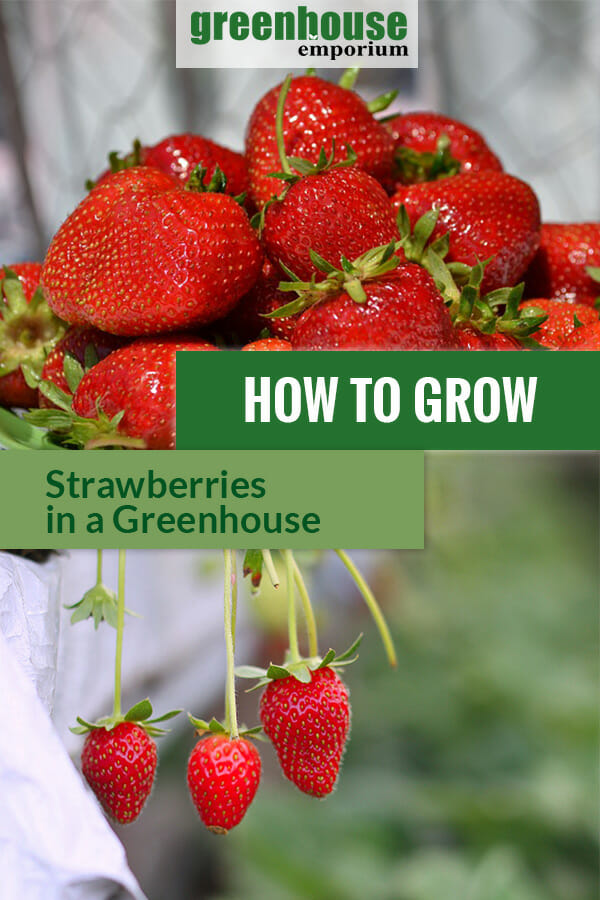
Soil requirements
Strawberries do well in nutrient-rich, well-drained, acidic soils that have high concentrations of organic matter. You can fertilize your strawberries twice a month with a well-balanced, organic compost throughout the growing period. The optimal pH should range between 5.5 and 7.0.
Combine a layer of straw or mulch throughout the surface to keep the roots cold and free from moisture. Switch to a high potash liquid fertilizer right after they start to bloom. This will maximize its fruit-bearing ability.
Lighting requirements
Make sure that the glazing of your greenhouse is clear and there is nothing in the way to obstruct out the light. They must receive at least six hours of daylight every day, some varieties need up to 12 hours.
Choose your greenhouse site accordingly and ensure the greenhouse kit you buy allow for adequate light.
If you want to grow greenhouse strawberries in winter, you should use a grow light to give your plants enough daylight. Otherwise, they cannot bear many fruits with a lack of light and photosynthetic movement.
Temperature requirements
Strawberries love to flower in a warm weather. The temperature must not go over 77ºF because higher temperatures can negatively impair the growth and kill the pollens.
Keep the greenhouse temperature around 65-77°F until they start flowering.
Once you have picked the strawberries, decrease the temperature inside your greenhouse so that it stays cold throughout winter. A cool phase is important to stimulate them to flower the next season. This only matters if you choose June-bearing or everbearing strawberry plants.
In the first eight months or so, pick off the blossoming flowers so the strawberry plants do not fruit. If you want to start growing strawberries from runners, make sure to maintain proper humidity levels because runners are usually more sensitive to warm temperatures than grown berries.
Common problems with greenhouse strawberries
From disease and pest management to maintaining optimal growing conditions, there are several common problems that greenhouse gardeners may face when cultivating strawberries in a greenhouse. Understanding these challenges can help in developing strategies to prevent or mitigate them, ultimately leading to a successful and productive strawberry harvest.
How to pollinate strawberry plants in a greenhouse
In order to bear fruits, strawberry flowers need to be pollinated. They are self-fertile which means each flower contains both male and female parts. Pollen needs to transfer from the stamen (male part) to the pistil (female part) of the same flower to facilitate successful fruit development.
Also, bear in mind that good pollination results in larger and well-shaped strawberries. Incomplete pollination can result in small or misshapen fruit.
In nature, insects and wind would take care of this. In a greenhouse, you have to create enough airflow so that pollination can happen. You can also manually pollinate them or keep large windows open for bumblebees.
Strawberry pests & diseases
Strawberries are susceptible to several common problems such as garden pests. Some of these are Japanese beetles, spider mites, slugs, and snails. Diseases such as powdery mildew and gray mold may cause serious losses as well.
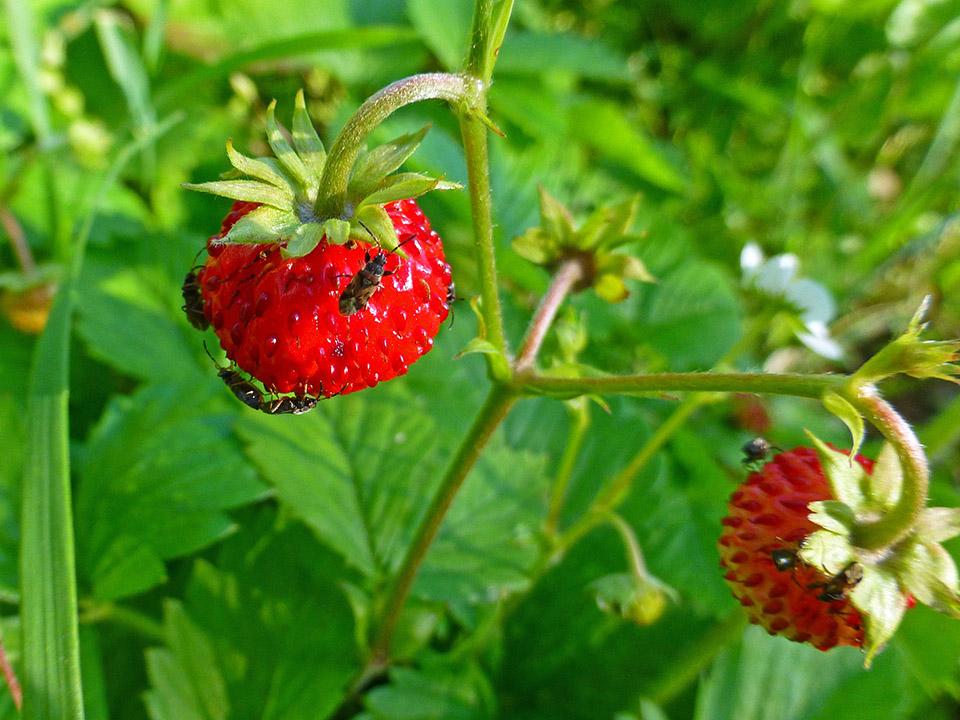
Maintain greenhouse cleanliness and be observant of manifestations of diseases to prevent them from spreading. Remove those dead foliage because they can harbor pests and diseases over the wintertime.
Make sure that your strawberries won’t be attacked by the verticillium wilt. Order certified classes and don’t plant them close to another plant like eggplants and tomatoes. You can prevent and reduce further threats by maintaining a neat greenhouse. Get rid of all dead plants before they decay.
Red stele root rot is caused by Phytophthora fragariae. It is one of the most severe fungus diseases of strawberries in the U.S. This organism invades plants throughout winter until springtime. It is very harmful in heavy clay soils soaked with water.
Ingredients for a basic fungal disease treatment
- Two drops of organic olive oil
- Two drops of liquid detergent
- Three tablespoons of baking soda
- One gallon of water
How often should I replace the strawberry plants in my greenhouse?
It is suitable to substitute strawberry plants after the third season or they may lose vigor producing lesser harvests, and your berries will become more susceptible to pests. If your space permits, move the beds to another section to prevent pests and diseases from growing.
Harvesting greenhouse strawberries
Strawberry fruits are usually ready about five weeks after the flowers blossom. Harvest by picking them every two days. Remove the mulch when the last strawberries have been harvested. Do not pull just pinch or cut them, leaving a half-inch of stalk.
Remove excessive immature fruits to keep your harvest time longer. If the plant bears a lot of fruits at once, it will transport its nourishment to fruits. Then the plant itself will get weaker.
Indulgence is acceptable when it comes to strawberries. Harvest them quickly as they ripen or they will rot on the plant. Monitor them every other day throughout the ripening season.
FAQs about greenhouse-grown strawberries
Do strawberries like humidity?
A relative humidity of 65 to 75% is considered the perfect range for fruits set and large fruits.
For storing strawberries, it’s even higher – 90-95% with cool temperatures 32 to 36°F.
Is vertical farming a good strategy for growing strawberries in a greenhouse?
Yes, going vertical is a great choice when growing strawberries in a greenhouse. You’re making the most of the space you have! Plus, you get more berries for your buck in terms of square footage. Also, the extra airflow is a big bonus because it helps keep those nasty fungi at bay. Harvesting time is a breeze, too – no more hunting for berries under leaves or worrying about them rotting on damp soil. Just keep in mind that you might need to invest in some special planters or even a hydroponic setup.
Can I use a greenhouse to overwinter strawberries?
If you’re living in a zone that is too cold to keep your plants outdoors (USDA 7 & lower), overwintering strawberries in a greenhouse might be the perfect solution for you. All you need to do is keep it above 22°F and still cool. We mentioned before that strawberries need winter dormancy (except day-neutral plants).

